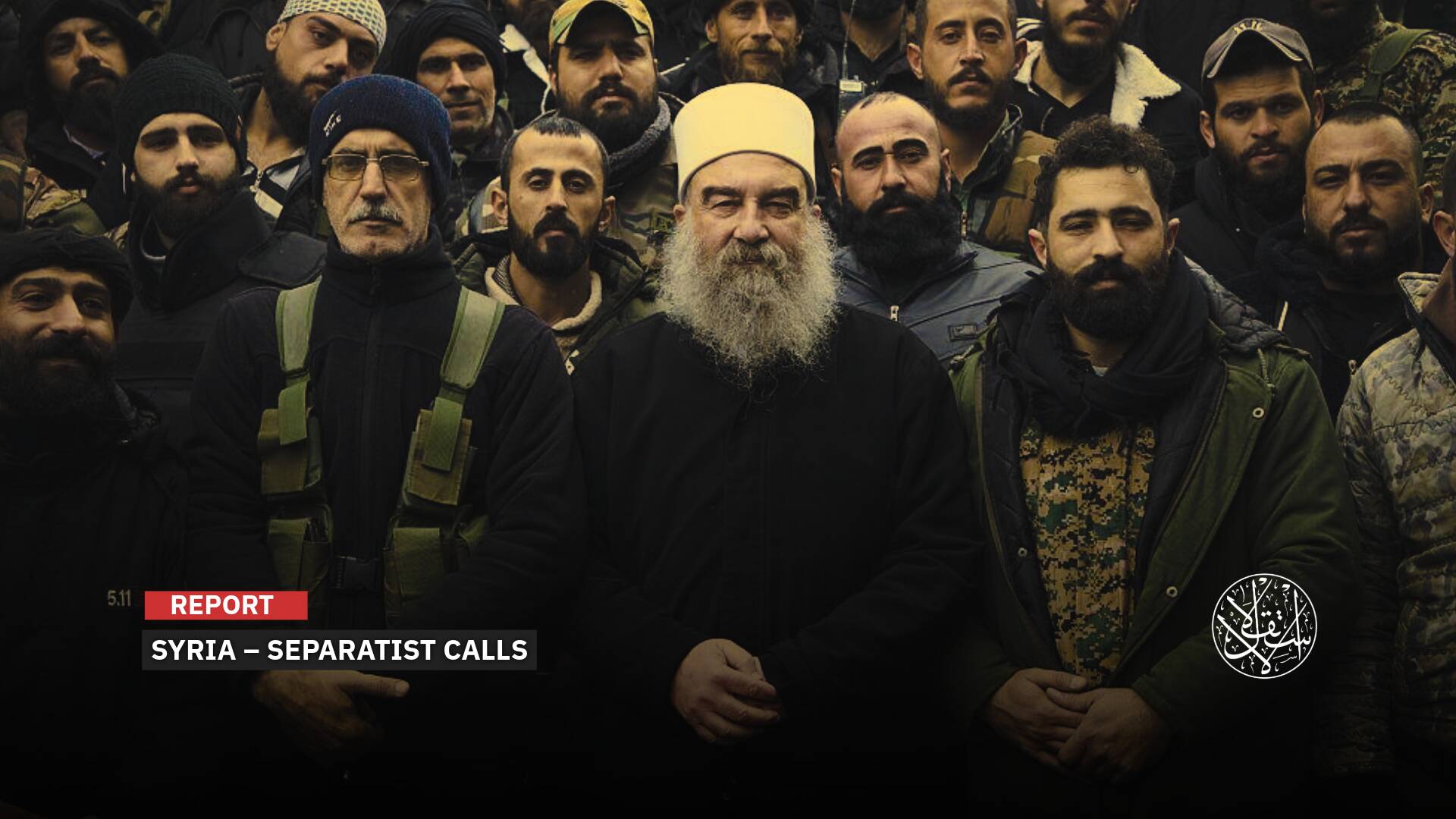Iran’s Strike on Al-Udeid Air Base: A Calculated Move to Contain the War, Open the Door to an Endgame

“Hitting the ‘brain’ rather than the ‘limbs’ was a highly symbolic move.”
Iran’s June 23, 2025 strike on a U.S. base in the Gulf immediately brought to mind the retaliation for Qassem Soleimani’s assassination; a move that reshuffled the strategic balance.
On January 3, 2020, just days before the end of his first term, President Donald Trump ordered the killing of Iranian Quds Force commander General Qassem Soleimani.
In response, Washington evacuated Iraq’s Ain al-Asad military airbase to allow Iran to strike it, with Western media describing the move as a way to “save face” for Iran.
During his 2023 campaign, Trump claimed there had been prior coordination between Washington and Tehran, implying that Iran had informed the U.S. in advance about its planned missile strike on Ain al-Asad as a way to save face.
However, Ali Shamkhani, senior adviser to Iran’s Supreme Leader Khamenei, denied Trump’s claims but confirmed Iran had notified Iraq about the strike, suggesting Washington was aware.
The recent Iranian strikes on multiple U.S. bases in the Gulf (the large Al Udeid base in Qatar) resemble the Soleimani retaliation scenario. The attacks targeted U.S. forces as well as the British Royal Air Force’s No. 83 Expeditionary Air Group (83 EAG) stationed there.
These developments coincided with President Trump’s June 23 announcement of a comprehensive ceasefire agreement between the Israeli Occupation and Iran, which took effect hours later.
Signs of Coordination
Multiple indicators suggest Iran’s strike on U.S. airbase Al Udeid followed indirect Iran-U.S. coordination, involving prior notification to Doha and then Washington.
First, Qatar announced a temporary closure of its airspace as a precaution during the Iranian missile barrage; six missiles all intercepted.
Second, U.S. media revealed that the military evacuated fighter jets and troops from Al Udeid well before the attack, starting around June 18, 2025.
Satellite images revealed by Planet Labs and analyzed by Agence France-Presse (AFP) showed dozens of U.S. military aircraft cleared from the runways of one of the largest U.S. bases in the Middle East.
Between June 5 and June 19, 2025, Al Udeid was almost completely emptied of visible military aircraft.
On June 5, about 40 military planes were parked on the runway, including large equipment carriers, troop transports, reconnaissance planes, and special operations aircraft like the C-130 Hercules.
By June 19, only three transport planes remained visible.
Third, before the Iranian strike on the base in Qatar, Trump held a National Security Council meeting to prepare for and respond to the attack.
Iran targeted Al Udeid Air Base in Qatar with 10 short-range missiles, nine of which were intercepted. This indicates the missiles were not as advanced as those launched against “Israel” (like Kheibar, Khorramshahr, and clustered Sejjil missiles).
Axios cited American sources saying that Trump convened the National Security Council in preparation for the Iranian attack on U.S. bases, while Fox News confirmed on June 23, 2025, that Washington was expecting the attack and ready for it—almost as if it had all been prearranged.
Fourth, on June 23, The New York Times quoted three Iranian officials confirming that Iran coordinated the attacks on the U.S. airbase in Qatar with Qatari authorities and provided advance notice of the strikes to minimize casualties.
They said Iran needed a symbolic response to the United States but also aimed to carry out the attack in a way that allowed all parties a way out.
This strategy was described as similar to the 2020 incident when Iran notified Iraq in advance before launching ballistic missiles at a U.S. base in Iraq in retaliation for the assassination of its top general, Soleimani.
Also on June 23, Axios quoted a source familiar with the matter, saying Iran coordinated its attack on Al Udeid Air Base with Qatar, and that the Trump administration had prior knowledge of the threat.
A second source told Axios that the United States received a well-advanced warning of the Iranian attack.

The Wall Street Journal reported on June 22 that Iran was moving rocket launchers to positions in preparation for a possible attack on U.S. forces in the Middle East, in response to U.S. attacks on three Iranian nuclear sites, according to U.S. officials.
CNN also reported on June 23, 2025, citing a White House official who confirmed that the Trump administration expected Tehran to retaliate after the strikes on its nuclear sites.
“We knew they would respond; they did something similar after Soleimani was killed,” the U.S. official said.
He also confirmed that Trump does not want further military involvement in the region, indicating that the strike and response are complete and that efforts will now focus on arranging a ceasefire between “Israel” and Iran, which later took effect.
The official noted that the president is prepared to escalate U.S. military intervention “if necessary,” but that he will consult with security officials and his position may change depending on developments, suggesting for now a stance of restraint.
However, Qatar condemned the Iranian strike for taking place on its soil and asserted its right to respond—though a retaliation remains unlikely due to prior understandings between the two sides.
The Iranian Supreme National Security Council emphasized in a statement that the number of missiles launched at Qatar was equal to the number of bombs the United States used in its strikes, signaling a desire to de-escalate.
“This action does not pose any threat to the friendly and brotherly country, Qatar, and its noble people, and the Islamic Republic of Iran remains committed to maintaining and continuing warm and historic relations with Qatar,” the statement said.
Significance of the Response
Despite signs of coordination between Iran and the U.S. (through Qatar), the response shows Tehran’s boldness and determination to assert its strength and resolve in confronting the U.S., “Israel,” and European allies indirectly involved in the conflict.
Expanding the scope of retaliation to — for the first time — strike U.S. bases in the Middle East reflects Tehran’s bold effort to curb U.S. intervention and to make clear it will not let such attacks go unanswered. Otherwise, it would appear weak and defeated. This sends a message of strength and resilience despite repeated strikes and signals Tehran’s intent to negotiate a ceasefire from a position of power.

However, limiting the response to just one base—the one in Qatar—despite Washington having 19 military bases in the region, including key bases in Bahrain, Qatar, Iraq, Jordan, the UAE, Syria, and Saudi Arabia, hosting thousands of troops, suggests a deliberate, measured response similar to the Soleimani scenario, opting for a calculated and limited retaliation.
The decision to strike only the U.S. Al Udeid base in Qatar—and not targets in Saudi Arabia, Bahrain, or the UAE—points to the ease of coordination between Iran and Qatar, given their good relations. This contrasts with Riyadh, Abu Dhabi, and Manama, which likely rejected any coordination to target bases on their soil.
On June 23, analysts speaking to ABC News said Iran’s choice of Al Udeid was no accident. The base hosts over 10,000 troops and is home to U.S. Central Command (CENTCOM), making it the “operational brain” of American forces in the Middle East.
From Tehran’s perspective, hitting the “brain” rather than the “limbs” was a highly symbolic move, signaling to America: You surround us with bases, and we respond by targeting the command center.
But the Iranian response was also described as “highly tactical,” with missiles fired toward a non-residential area, and allied forces reportedly given approximate coordinates in advance, according to Western intelligence sources. This suggests the attack was political, aimed at sending a message to the U.S. without causing casualties.
Still, the strike puts President Trump in a very difficult position. The Iranian attack on America’s largest military base in Qatar raises questions about how Trump will respond and the impact on his public image, ABC News noted.
The Revolutionary Guard’s statement on the operation confirmed that Al Udeid “is the headquarters of the U.S. Air Force Central Command and the largest strategic asset of the U.S. military in West Asia.”
Signs from the strike, combined with Iran’s restraint in not expanding attacks to other bases and notifying Trump’s officials, suggested that the president did not want further military involvement in the region. Both sides appeared inclined toward de-escalation.
Syrian analyst Ahmed Ramadan sees the “measured” Iranian strike within engagement rules as an attempt to regain dignity after Trump’s attack, while still paving the way for Iran’s return to the negotiating table with Washington.
Gulf Relations
Despite Iran’s careful coordination of the strike and limiting it to the Gulf state with the best relations—Qatar—while avoiding targets in Saudi Arabia, the UAE, or Bahrain to prevent tensions with Gulf countries, analysts believe this unprecedented strike will weaken Iran’s standing in the region.
Kuwaiti politician and lawyer Nasser Duwailah said Tehran “did not act with a strategic mindset” by hitting a base in Qatar. He added that if Iran had focused on striking “Israel,” both the U.S. and “Israel” would have been forced to submit.
He also noted that Iran gains little from bombing empty buildings at U.S. bases in the Gulf that have already been evacuated by American forces.
Saudi Arabia condemned the attack as a “blatant violation of sovereignty” and expressed full solidarity with Qatar and the United States. The Gulf Cooperation Council (GCC) described Iran’s missile attack on Qatar as a “gross violation of its sovereignty.”
Abdulkhaleq Abdulla, adviser to UAE President Mohammed bin Zayed, sought to rally opposition against Iran, calling the “blatant and brutal Iranian assault on Qatar and violation of its sovereignty” an attack on all Gulf Arab states.
Abdulla urged Gulf and Arab capitals to “immediately cut diplomatic ties with the Iranian aggressor who has committed an unforgivable crime,” according to his statement.
However, an Egyptian political analyst told Al-Estiklal that Iran’s limited strike on Al Udeid base in Qatar is unlikely to affect Tehran’s relations with Gulf countries, especially Qatar, Saudi Arabia, and Bahrain.
The analyst, who requested anonymity for security concerns, noted that Qatar understands the reasons behind the strike and coordinated with Iran. Tehran emphasized in its statement that Qatar is a “brother country” and that the target was American, not Qatari. Meanwhile, Bahrain stated that “Israel” is behind all what happened, accusing it of aggression against Iran.
The source confirmed that Gulf countries—particularly Qatar—may have preferred this approach: a “Qassem Soleimani-style” strike aimed at ending the war rather than an unpredictable escalation that could harm all Gulf states. “Iran’s calculated strike also removes any justification for closing the Strait of Hormuz, which would have harmed Gulf oil exports.”
Sources
- Trump calls Iran's retaliation on American base 'very weak,' doesn't say US will respond militarily
- Iran attacks US air base in Qatar: What we know so far
- A weakened Tehran lashes out performatively against US airbases to save face
- Trump Says Cease-Fire Has Started Between Iran and Israel
- Trump administration was anticipating retaliation from Iran, White House official says
- No casualties reported after Iran missile attack on U.S. base in Qatar
- Iran fires missiles at US base in Qatar, Trump calls for peace









